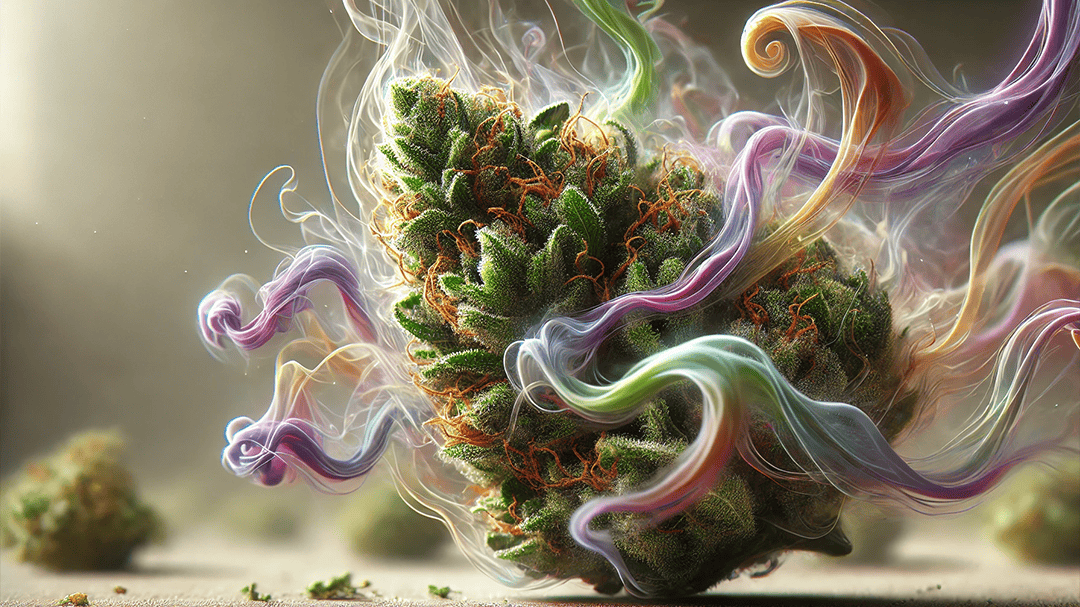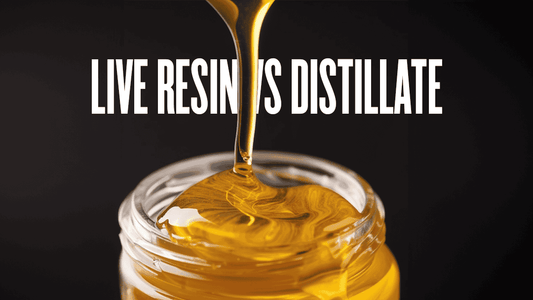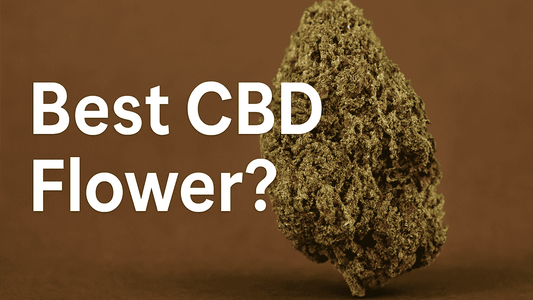Have you ever wondered where flowers get their scent from? It’s all to do with terpenes. This guide breaks down the science behind these plant compounds, their uses, and what you need to know about terpenes (often referred to colloquially just as “terps”) in relation to CBD.
What are terpenes?

Terpenes are aromatic, organic compounds found in plants, including cannabis and hemp plants (from which CBD is derived). They are constituents of essential oils and responsible for the distinct scents and flavors of various plants, from citrusy lemon aromas to the piney scent of a forest to the nutty and creamy notes of a vanilla pod. These compounds play a key role in plant survival by attracting pollinators and deterring predators.
As noted in ScienceDirect, “Terpenes have characteristics such as fragrance, taste, and color that primarily act as pesticides and repel parasites. They also have various antimicrobial properties to help the plant build immunity against bacteria, plasmodium, fungi, and viruses.”
With cannabis, terpenes are produced in the same glands as cannabinoids like CBD and THC. While they don’t have psychoactive effects, terpenes interact with cannabinoids to influence the overall effects of a product—a phenomenon known as the "entourage effect."
In short, when you consume a product rich in terpenes, the entourage effect is the positive contribution (a kind of superboost!) that comes from the addition of terpenes to cannabinoids.
What are terpenes used for?

Let’s dig into the science a little. Terpenes are organic compounds consisting of isoprene, a five-carbon building block.
Both terpenes and terpenoids (a class of organic compounds derived from terpenes through oxygenation, defined by the presence of an oxygen atom) can be used as flavors, drugs, and fragrances.
Terpenoids are thought to have a number of beneficial effects, including antioxidant activity, antimalarial activity, antiinflammatory effect, anticancer properties, and antiulcer activity (Adefegha, Oboh, Oluokun, Food bioactives: Studies in Natural Products Chemistry, 2022)
While research into these classes of plant compounds remains relatively limited, understanding of the vast application and uses of terpenes is steadily growing.
Common terpenes found in CBD products and their associated potential benefits
So, which terpenes can be found in CBD? Here are a few of the most common, alongside their potential benefits and recognisable aromas.
1. Myrcene
- Smells like: Earthy, musky, with hints of fruit.
- Potential benefits: Myrcene is thought to be the dominant terpene found in many cannabis strains. The compound is known for its sedative properties and is thought to help with relaxation and sleep.
One study published in Planta Medica found that myrcene has muscle-relaxant effects. It is, therefore, a popular choice for those seeking relief from stress. Note that while Myrcene has shown promising health benefits in many animal studies, evidence derived from human studies is lacking.
2. Limonene
- Smells like: Citrus, fresh.
- Potential benefits: Limonene is uplifting and is thought to improve mood. Research published in Sage Journals suggests that limonene has analgesic and anti-inflammatory effects, including potential therapeutic effects on colitis, pneumonia, and airway inflammation.
The mechanism is associated with controlling inflammatory signaling pathways and suppressing inflammatory factors. Overall, the compound’s anti-inflammatory and antioxidant properties are thought to support general well-being.
3. Alpha–pinene
- Smells like: Pine, fresh forest.
- Potential benefits: A-pinene is found in essential oils of coniferous trees as well as in plants such as rosemary. The compound is best known for its memory-enhancing, anti-inflammatory, and antimicrobial properties, and is often thought to help enhance focus and alertness. As such, CBD products rich in alpha-pinene are often thought to be a good pick for consumers keen to improve cognitive function while still enjoying the sense of relaxation associated with CBD consumption.
4. Linalool
- Smells like: Floral, lavender-like.
- Potential benefits: Known for its calming properties, linalool may reduce anxiety and improve sleep. One scientific literature analysis published in the National Library of Medicine concluded that “linalool emerges as a promising bioactive compound in the therapeutic arsenal, capable of interacting with numerous pathophysiological factors and acting on several targets.” Specifically, the compound is considered to have potential as a natural remedy for stress, with growing evidence pointing to linalool’s impact on the central nervous system and applications as an antidepressant agent.
5. Caryophyllene
- Smells like: Spicy, woody.
- Potential benefits: Caryophyllene is considered to be unique among terpenes because it is able to interact directly with the body’s endocannabinoid system (ECS) - just as cannabinoids do. Specifically, the compound is able to bind to CB2 receptors, meaning it holds significant potential therapeutic applications. As well as being found in cannabis and hemp plants, caryophyllene is present in a variety of spices and herbs including basil, black pepper, and cloves. Research published in Neurotherapeutics suggests that the unique compound may help with inflammation and pain management. Meanwhile, a 2020 Nutrients journal paper sets out the findings of animal research which indicates the beneficial and protective effects of Caryophyllene on obesity, non-alcoholic fatty liver disease/nonalcoholic steatohepatitis (NAFLD/NASH) liver diseases, diabetes, cardiovascular diseases, pain, and other nervous system disorders.
What are terpenes used for? The role of terpenes in CBD products
A few things stand out when we consider the role of terpenes in CBD products and how they can help enhance the experience of consuming CBD. Here are a few key points to note.
1. Terpenes enhance the entourage effect
One of the most notable aspects of terpenes is their ability to work synergistically with cannabinoids. This "entourage effect,” touched on previously in this guide, amplifies the therapeutic benefits of CBD. For example, the combination of CBD and myrcene may enhance relaxation, while CBD and limonene might offer a more uplifting experience.
2. They improve the smell and taste of products
Terpenes give CBD products their distinctive flavors and aromas, making the consumption experience more enjoyable. Whether you prefer a fruity, herbal, or citrusy profile, the right blend of terpenes can enhance the sensory appeal of CBD.
3. They target specific effects
By choosing CBD products with specific terpene profiles, you can tailor your experience to meet your needs. For example, a product rich in linalool and myrcene may be ideal for nighttime use. Meanwhile, one with limonene and pinene could be better suited for daytime focus.
Terpenes: A myriad of uses and potential
From enhancing the effects of CBD to offering a range of therapeutic benefits, terpenes are used for numerous purposes and are a key component of any high-quality CBD product. When selecting a CBD product, it’s important to look for detailed information about its terpene profile. Full-spectrum and broad-spectrum CBD products typically retain a variety of terpenes, while CBD isolate lacks these compounds.
Terpenes can also be added to or used to make a number of products, from e-liquids to food recipes, cleaning agents, beauty products, and much more. HempElf’s selection of terpenes, for instance, can be consumed with a cannabinoid-rich product such as CBD oil, water-soluble CBD, or CBD flowers within a 2-hour period.
If you’re seeking stress relief, better sleep, or greater focus, the right terpene profile can make a significant difference in tailoring outcomes. Note that it’s important to speak with a healthcare professional if you’re new to CBD or have any specific medical concerns. Neither CBD nor isolated terpenes are a replacement for traditional medicine, nor a cure for any specific medical ailments.

 4.6 Rating. Excellent.
4.6 Rating. Excellent.





